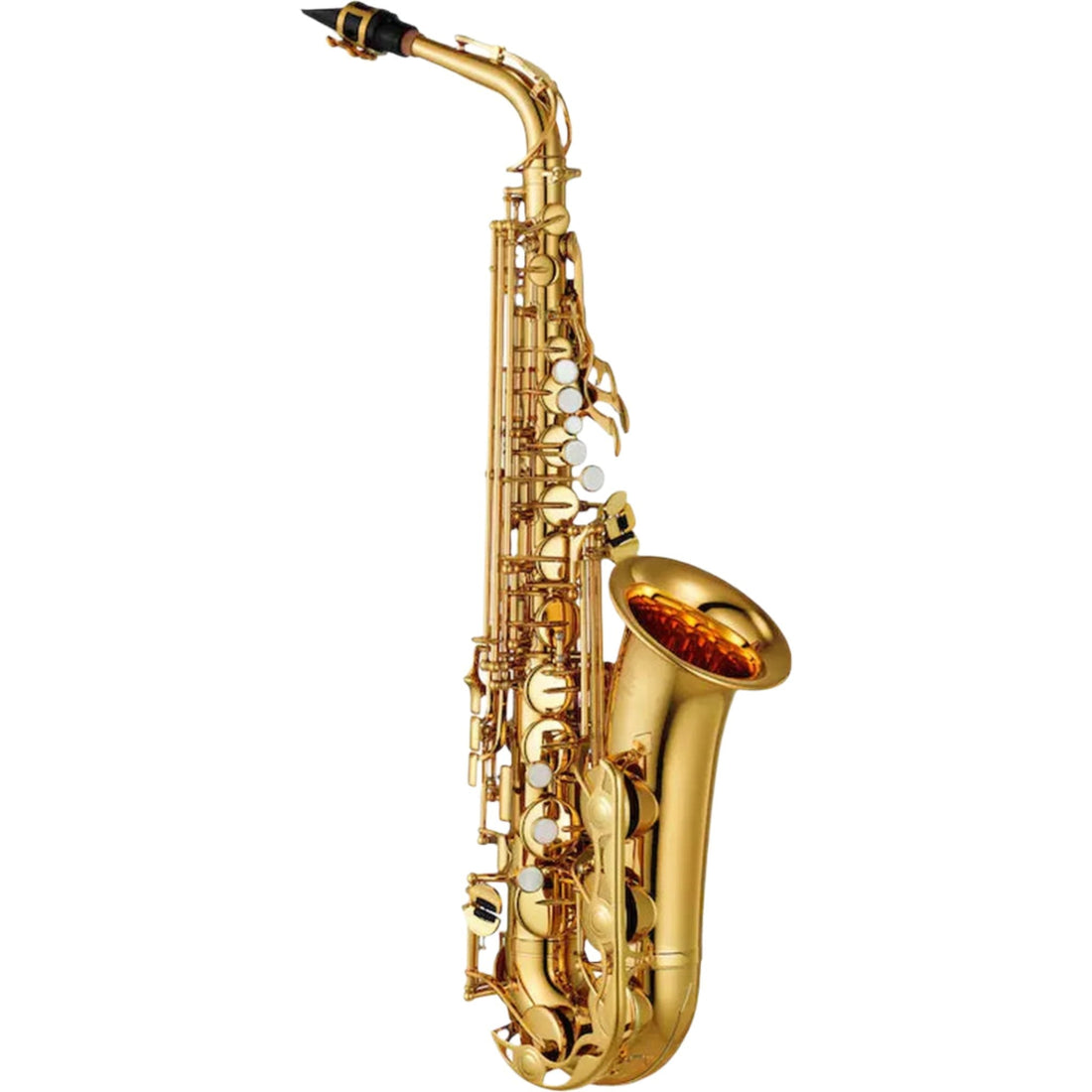Joondalup Music Centre in Perth is serious about supplying quality saxophones and sax accessories to musicians across Australia.
If you’ve ever been captivated by the rich, expressive sound of a saxophone, you’re not alone. Whether it’s the smooth jazz tones of a tenor sax or the bright punch of an alto, this versatile instrument has been a staple in music for over a century. But with so many options available, choosing the right saxophone can feel overwhelming. From materials and construction to tone variations, weight, and pricing, there’s a lot to consider before making a decision.
In this guide, we’ll break down everything you need to know about saxophones, helping you understand the differences between models, brands, and features so you can find the perfect one for your needs.
A Brief History of the Saxophone
The saxophone was invented in the 1840s by Belgian instrument maker Adolphe Sax. Designed to bridge the gap between woodwinds and brass, the sax quickly gained popularity in military bands and orchestras. Over time, it became a defining instrument in jazz, rock, classical, and even pop music.
Today, saxophones come in various shapes and sizes, each offering a unique tone and playing experience.
Types of Saxophones and Their Sound
There are four main types of saxophones commonly used today:
1. Soprano Saxophone
- The smallest of the four, with a bright and piercing sound.
- Often straight rather than curved, resembling a clarinet.
- Used in jazz, classical, and some pop music.
- Requires precise control due to its higher pitch.
2. Alto Saxophone
- The most common beginner saxophone, known for its balanced size and warm tone.
- Used in jazz, rock, pop, and classical music.
- Offers a smooth, expressive sound without being too shrill.
- Popular among students and intermediate players due to its manageable weight and fingering system.
3. Tenor Saxophone
- Larger than the alto, producing a deeper and richer sound.
- Associated with jazz greats like John Coltrane and Sonny Rollins.
- Frequently used in jazz, blues, rock, and funk.
- Heavier and slightly harder to control for beginners but offers a powerful tone.
4. Baritone Saxophone
- The largest and deepest-sounding sax in common use.
- Provides a booming, resonant tone often found in jazz ensembles and classical music.
- Heavier and more expensive, making it less common for beginners.
- Used by artists like Gerry Mulligan and in funk bands for deep, punchy bass lines.
Materials and Construction
Saxophones are generally made of brass, but the way they are constructed can greatly affect their sound and durability.
1. Brass Body with Lacquer Finish
- The most common material for saxophones.
- Produces a warm, classic saxophone tone.
- Lacquer can range from standard gold to darker or matte finishes that slightly alter the tone.
2. Silver-Plated Saxophones
- Often produce a brighter, more focused sound.
- Favoured by classical and jazz players looking for extra projection.
- Slightly more expensive and requires more maintenance to keep tarnish-free.
3. Unlacquered or Raw Brass Saxophones
- Have a vintage look and develop a natural patina over time.
- Provide a slightly darker, more complex tone.
- Often chosen by professionals for their rich sound, though they require more maintenance.
4. Nickel-Plated Keys and Components
- Many saxophones have nickel-plated keys for durability.
- Nickel-plated instruments tend to have a slightly brighter tone.
Tone Variations and How They’re Achieved
Several factors influence a saxophone’s tone, including the player’s embouchure, the instrument’s design, and accessories like mouthpieces and reeds.
1. Mouthpieces and Reeds
- A harder reed (higher number) produces a more focused, controlled sound but requires more air pressure.
- Softer reeds (lower number) are easier to play and produce a mellower tone.
- Jazz musicians often use larger tip openings on mouthpieces for a more expressive sound, while classical players prefer more focused, centred tones.
2. Bore Size and Shape
- A wider bore gives a bigger, more powerful sound (common in tenor and baritone saxes).
- A smaller bore results in a more focused and precise tone (found in alto and soprano saxes).
3. Finish and Material
- While the impact is subtle, the finish (lacquered vs. unlacquered vs. silver-plated) can influence brightness or warmth in tone.
Weight and Playability
Saxophones range in weight depending on size and materials.
- Soprano Sax: 1–2 kg (lightweight but requires precise embouchure).
- Alto Sax: 2–3 kg (manageable for most players, including beginners).
- Tenor Sax: 3–4 kg (heavier but still comfortable for most adult players).
- Baritone Sax: 5–7 kg (requires a neck strap or harness for long playing sessions).
For younger or smaller players, an alto sax is often the best starting point due to its balanced weight and size.
Popular Saxophone Brands and Pricing
There are many saxophone brands, ranging from budget-friendly beginner models to high-end professional instruments.
1. Beginner Saxophones ($600–$1500 AUD)
- Jupiter JAS-500A (Alto) – Reliable, great for students.
- J. Michael AL500 (Alto) – Good tone and durability.
- Beale SX200 (Soprano) – Affordable entry-level sax.
2. Intermediate Saxophones ($1500–$3000 AUD)
- Yamaha YAS-480 (Alto) – Great tone and key response.
- Steinhoff Intermediate (Alto) – Rich, warm sound for jazz and rock.
- Jupiter JTS700Q (Tenor) – Unlacquered for a vintage look and feel.
3. Professional Saxophones ($3000+ AUD)
- Yamaha YAS62S – World-class tone and craftsmanship.
- Yamaha YAS480ID – Highly regarded for precision and sound.
Key Features to Look For
✅ Quality of materials (brass, silver-plated, unlacquered).
✅ Ease of playability (key responsiveness, weight balance).
✅ Mouthpiece and reed compatibility for desired tone.
✅ Brand reputation and reliability.
✅ Price range suitable for skill level.
FAQ: Saxophones Explained
1. What is the Best Saxophone for Beginners?
The alto saxophone is the best for most beginners due to its balanced size, weight, and playability. Brands like Yamaha and Jupiter offer excellent starter models.
2. Is a Cheap Saxophone Worth it?
Cheap saxophones under $500 AUD can have poor build quality and tuning issues. If you’re serious about learning, invest in a well-reviewed beginner sax from a reputable brand.
3. How do I Maintain a Saxophone?
Clean the mouthpiece and reeds regularly, swab out moisture after playing, and oil moving parts as needed. Store it in a proper case to prevent damage.
4. Can I Teach Myself Saxophone?
Yes, but lessons (either in person or online) can greatly speed up progress. There are also plenty of tutorials available on YouTube to help beginners get started.
5. How Long Does a Saxophone Last?
A well-maintained saxophone can last decades. Regular servicing, pad replacements, and cleaning will keep it in top condition.
Final Thoughts
The saxophone is one of the most expressive and versatile instruments out there, suitable for all types of music. Whether you’re a complete beginner or an experienced player looking to upgrade, understanding the different models, materials, and price points can help you make the best choice. Take your time, come visit us at Joondalup Music Centre in Perth and try different saxophones if possible, and find the one that feels right for you. Happy playing! 🎷

